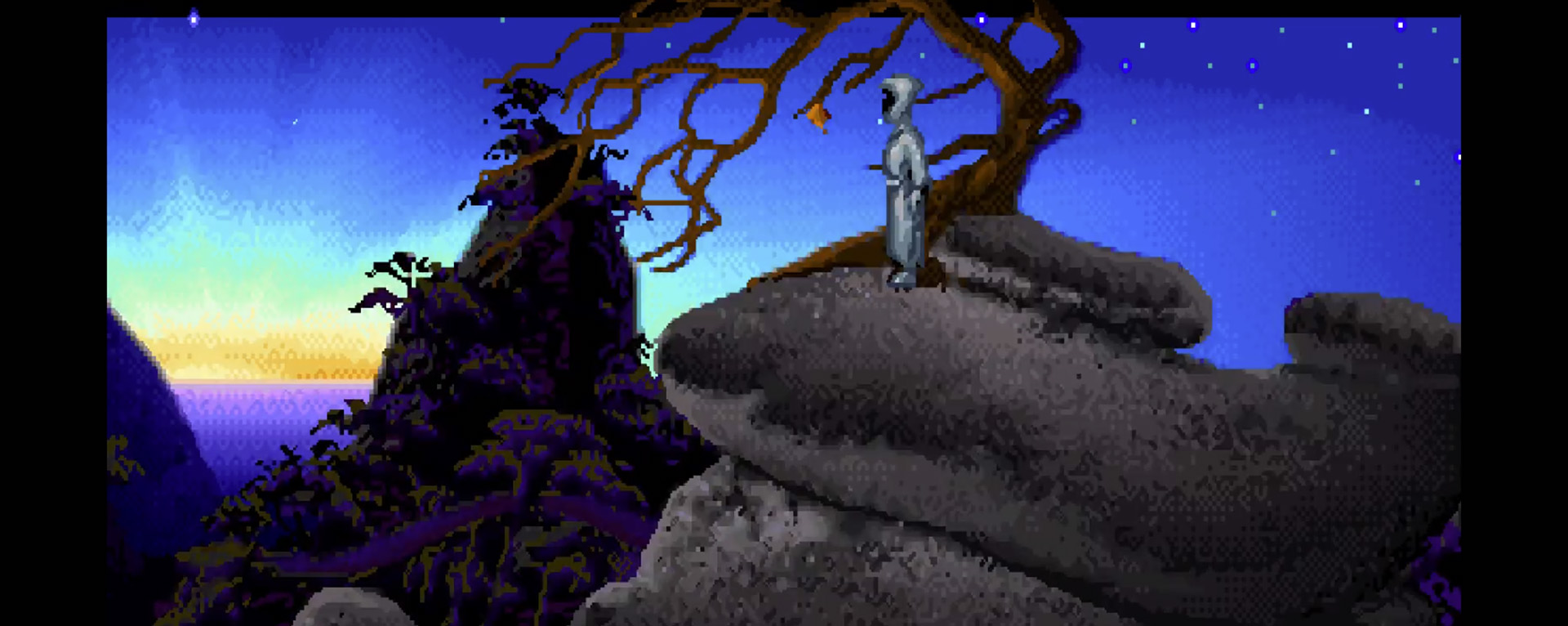Lucasfilm Games Rewind: Loom
“Beat the rush! Go out and buy Loom today!”
In Lucasfilm Games Rewind, Lucasfilm.com looks back at classic Lucasfilm Games adventures, discussing why we love them, their legacy, and why it’s not too late to revisit them today.
“Do you know Loom, the masterpiece of fantasy storytelling from Lucasfilm’s™ Brian Moriarty™?”
Loom, released in 1990, is a beloved Lucasfilm Games fantasy adventure designed by Moriarty alongside a team that included artists Gary Winnick and Steve Purcell. In this unique tale, players meet Bobbin Threadbare, a Weaver who lives in an exhausted world. He interacts with the people and things around him with magic spells cast by playing specific notes in a melody. Several elements of game design set Loom apart from its contemporaries, including an audio drama cassette tape included in the box and an emphasis on story and exploration over action or pure puzzle-solving.
“Most important of all,” declares the original game manual, “Loom is designed to be completed, not played halfway through and then thrown on a shelf and forgotten. We spent a lot of time and effort creating these disks. We want you to enjoy them all!”
Loom has certainly accomplished its goal over the decades: this adventure is absolutely unforgettable.
Let’s face the music of Loom in this edition of Lucasfilm Games Rewind!
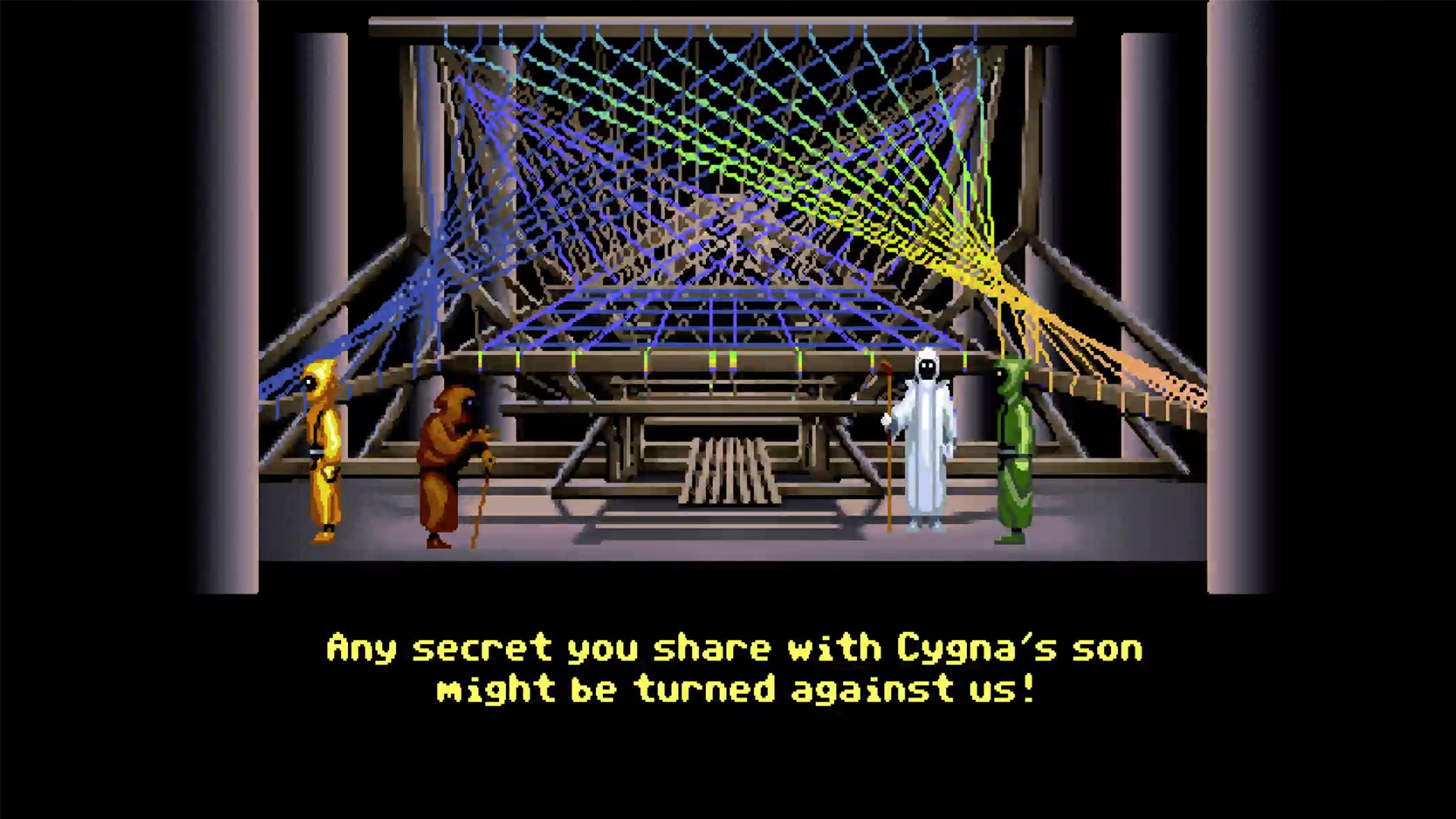
Inside Story
When development began on Loom, Moriarty found inspiration in a few unexpected places. He recalls flipping through a computer magazine in the office one day and coming across an ad for a circuit board; the text underneath the photo referred to it as a loom. An idea started to take shape in Moriarty’s mind.
For the visual style, the team was influenced by Disney’s timeless classic Sleeping Beauty (1959), particularly artist Eyvind Earle’s gorgeous color direction and animator Marc Davis’s work on Maleficent. (The design of the Loom character Chaos is a clear callback to the all-time great Disney villain.) And, just as Sleeping Beauty was set to the soundtrack of an ageless Tchaikovsky ballet, so was Loom. “[Swan Lake] is the soundtrack of my life,” Moriarty said at the Game Developers Conference in 2015, “and when I finally had a chance to put music in one of my games, there was never any question where that music was going to come from.”
As the expansive narrative and setting of Loom grew during development, Moriarty considered adding a storybook to the game box to introduce players to Bobbin’s world. Instead, he turned to Lucasfilm Games’s neighbor Sprocket Systems – the company that would soon be renamed Skywalker Sound – to craft an epic audio drama kicking off the story that would be continued in the game.
“The Loom audio drama was written in parallel with the game design,” said Moriarty, “and recorded in March of 1989 with a superb cast of British voice actors.”
This is the Age of the Great Guilds, the audio drama narrator tells the listener. The Guild of Weavers were so skilled in their craftwork that, in time, they learned to weave more than just cloth. They spun light and magic to change reality itself. The Weavers sequestered themselves away from the rest of the world, on “an island of mystery shrouded in perpetual mist, shunned by sailors, which ancient maps called Loom.”
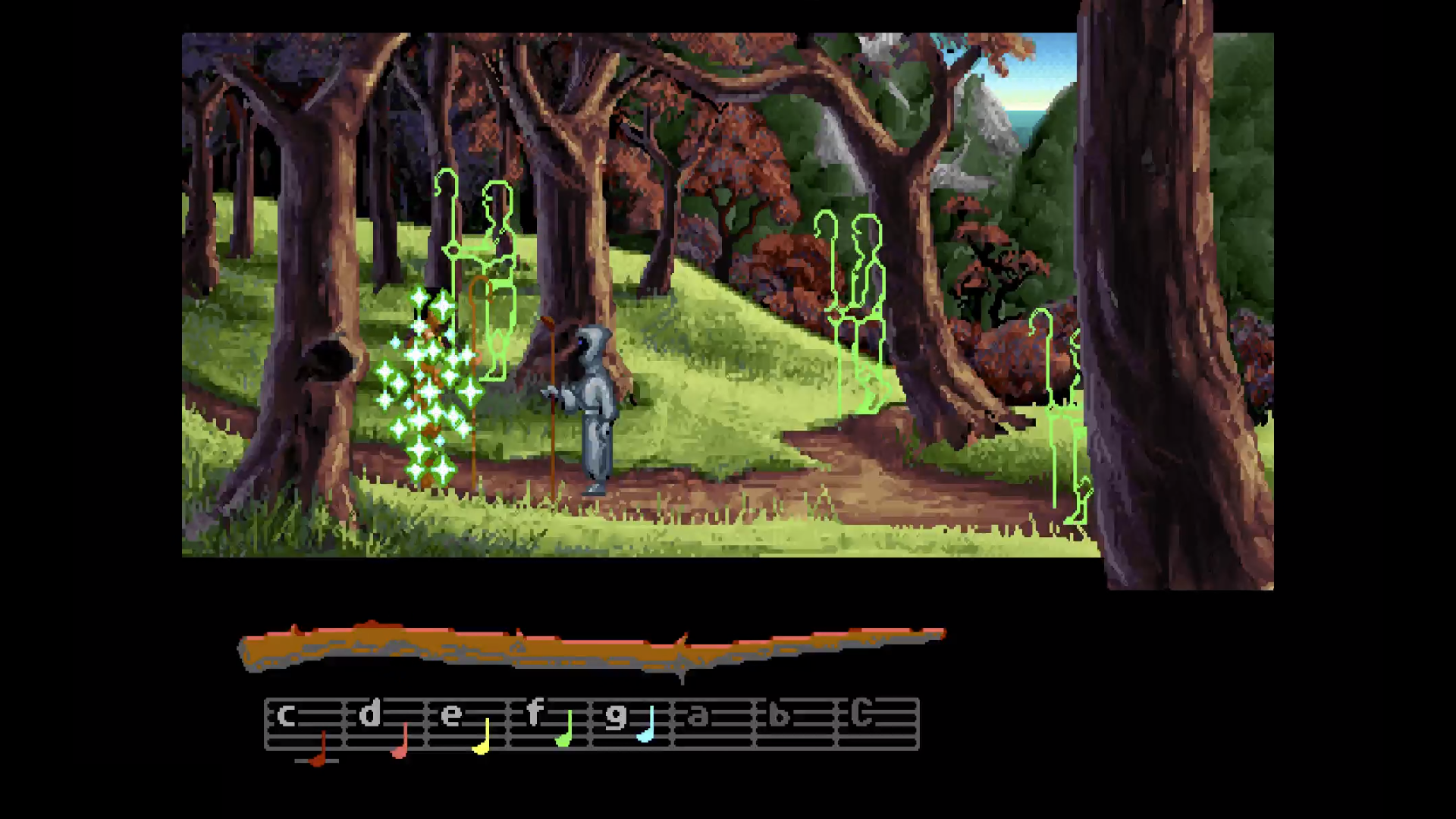
Gameplay
Bobbin Threadbare is a Weaver who lives on that island with his guardian, Hetchel. He learns his first melodies of magic as he embarks on a quest to help Hetchel and find the missing Weavers of his village. As Bobbin, players progress through the story by playing four-note melodies – called drafts – that they collect during his journey. His instrument is a distaff, a tool typically used in spinning thread. Using the mouse or keyboard to “play” the correct notes on Bobbin’s distaff casts his magic on his selected target.
Unlike other LucasArts adventure games, Bobbin uses those spells to handle obstacles directly, rather than collecting a variety of items to solve elaborate puzzles. And while Loom does use LucasArts’s famous SCUMM engine, there are no text commands like “use” or “pick up” displayed on screen; there’s also no inventory nor even typing in this one-of-a-kind adventure game.
Instead, playing the appropriate notes performs an action, like “open” or “transcend.” The beautifully illustrated Book of Spells, included with the game, gives players their first drafts and provides subtle clues for a Weaver who might be feeling stumped.
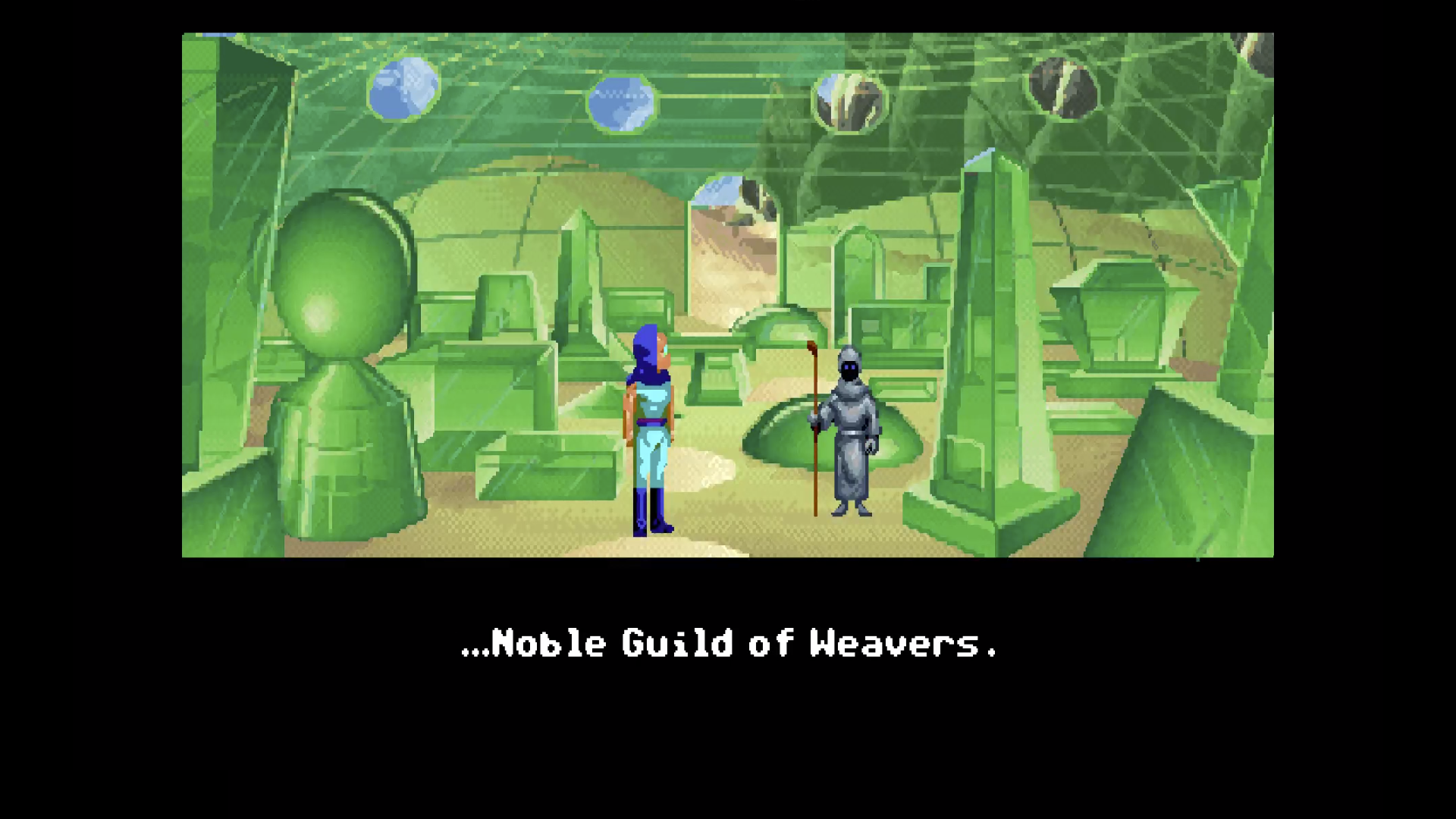
Lasting Legacy
Loom hit all the right notes for adventure game beginners and young players who probably grew up to be dubbed “casual” gamers. Story Mode didn’t exist in video games in 1990, but if it had, Loom would have fit the bill by default. An argument could be made that it was the very first story-driven game in the spirit of modern titles like Firewatch or Gone Home.
For Moriarty, Loom’s legacy is much more personal, especially when he meets someone who says the game inspired them in their own journey. “It’s a very humbling experience to touch so many people,” he said in 2015. “It was a privilege I can never repay and probably never repeat.”
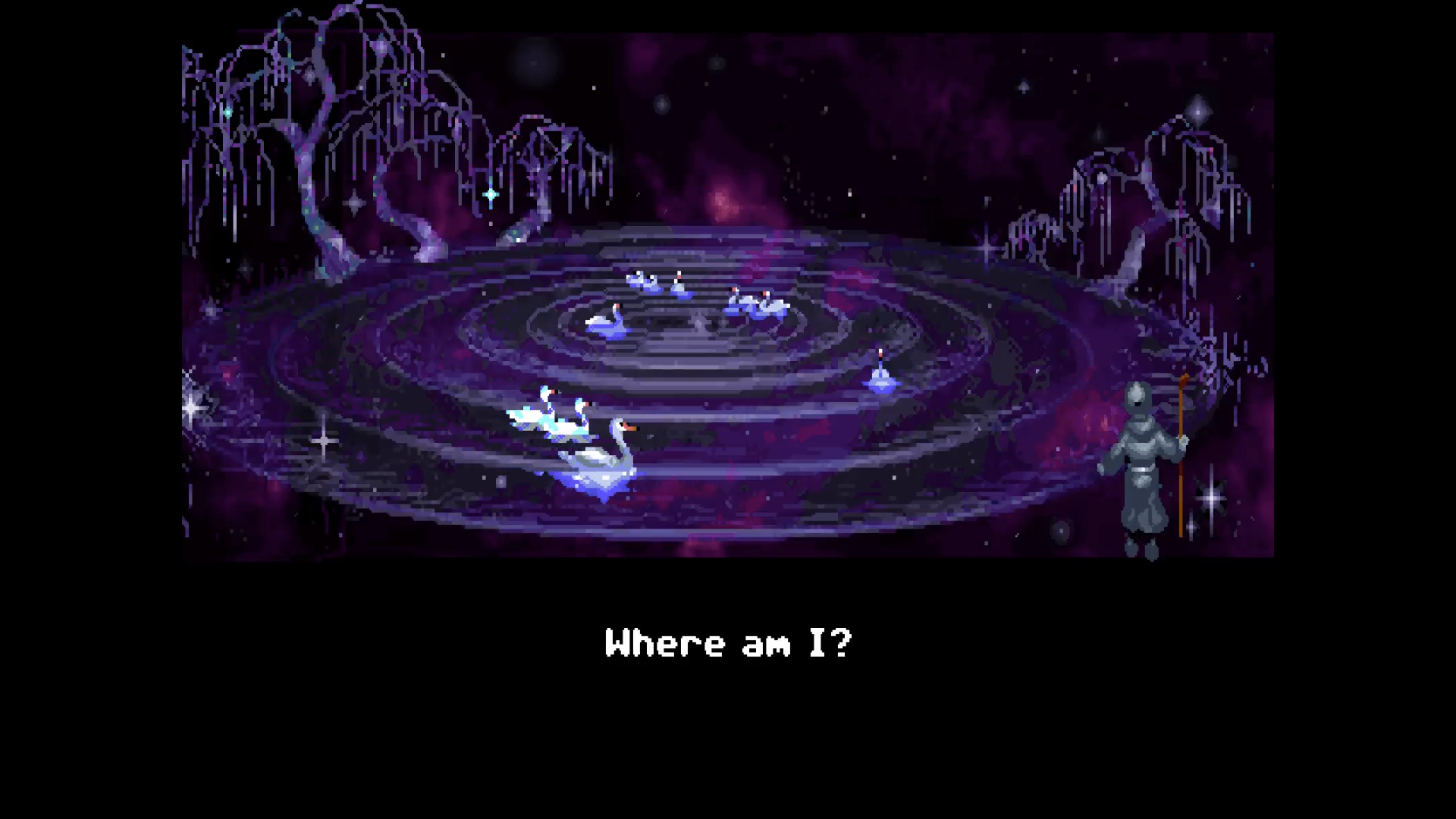
Kelly Knox is the author of Star Wars: Conversation Cards, Be More Obi-Wan, and Star Wars: Dad Jokes. You can find her on X at @kelly_knox.
Lucasfilm | Timeless stories. Innovative storytelling.

